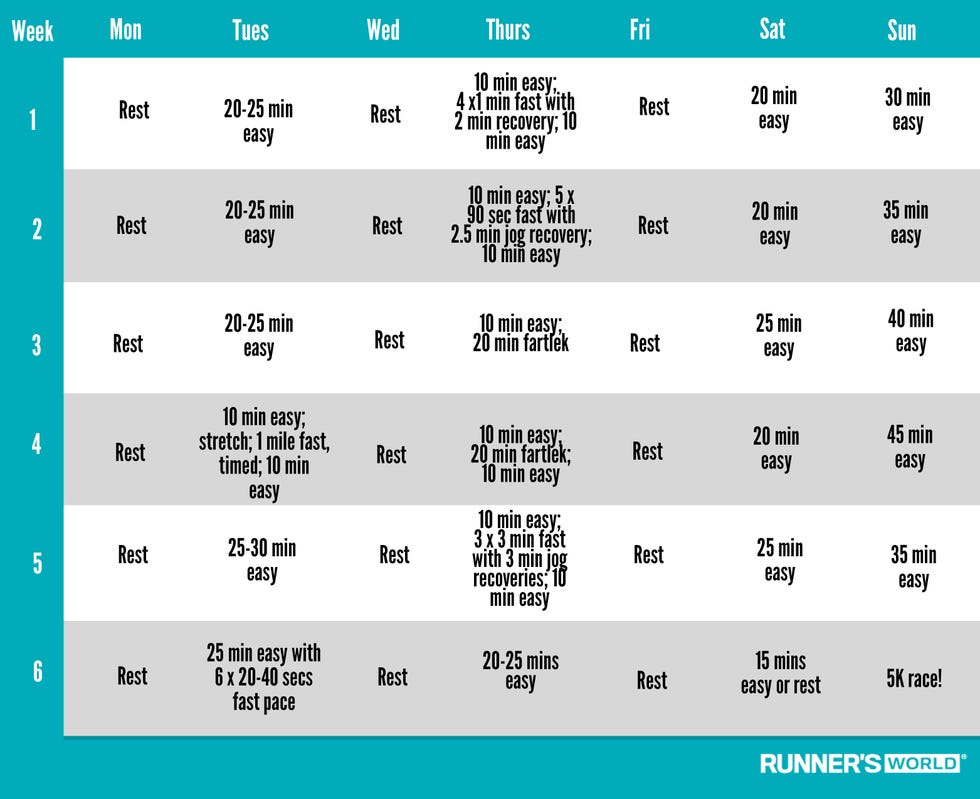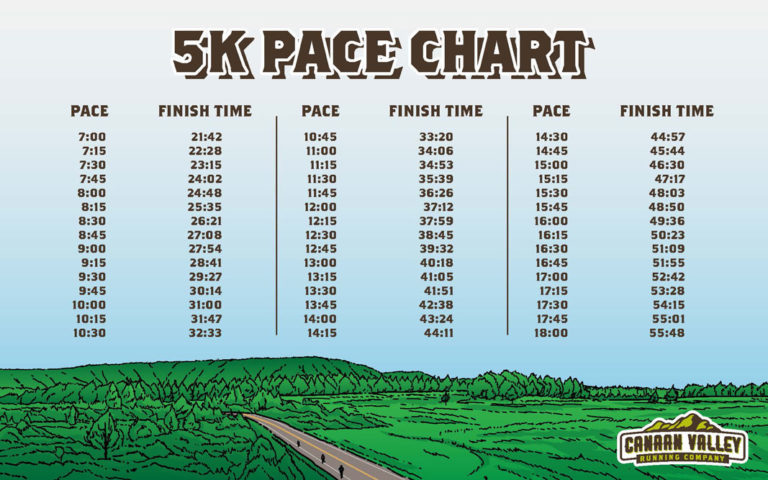What to Expect: Achieving Your Desired 5k Times
Embarking on a 5k journey is an exciting endeavor, whether you are a seasoned runner or a beginner. Achieving your desired 5k times involves setting realistic goals and understanding the various factors that influence running performance. The significance of training for personal bests cannot be overstated, as it allows you to monitor progress, build confidence, and experience a sense of accomplishment.
Several factors come into play when striving for improved 5k times. First, age is a crucial consideration, as running performance tends to peak in the late 20s to early 30s for most individuals. However, this does not mean that older runners cannot achieve personal bests with proper training and dedication. Fitness level is another essential factor, with higher fitness levels generally correlating to better running times. Running experience also plays a role, as more experienced runners typically have a better understanding of pacing, race strategy, and effective training techniques.
To set realistic 5k time goals, consider your current fitness level, running experience, and age. Utilize online resources, such as pace calculators and training plans, to establish a baseline and determine achievable time improvements. Remember that progress takes time and patience, so be prepared to invest in consistent training and dedication to reach your desired 5k times.
Breaking Down the Components: Training, Nutrition, and Recovery
Achieving your desired 5k times requires a holistic approach, encompassing not only training but also proper nutrition and recovery. Balancing these three components is crucial for optimal running performance and long-term success. Neglecting any one of these areas can hinder progress and increase the risk of injury or burnout.
Training
A well-structured training plan forms the foundation of any 5k journey. Incorporating various workout types, such as interval training, tempo runs, and long runs, ensures a comprehensive approach to improving 5k times. Interval training involves alternating between high-intensity and low-intensity periods, enhancing cardiovascular fitness and speed. Tempo runs, executed at a challenging yet sustainable pace, develop lactate threshold and endurance. Long runs, typically performed at a slower pace, contribute to overall aerobic conditioning and mental resilience.
Nutrition
Proper nutrition plays a significant role in 5k performance. Consuming a balanced diet, rich in carbohydrates, proteins, and healthy fats, provides the necessary energy and supports muscle repair and recovery. Pre-run meals should focus on easily digestible carbohydrates, while post-run meals should include a mix of protein and carbohydrates to facilitate recovery and replenish glycogen stores. Adequate hydration, both during and outside of training, is also essential for optimal performance and overall health.
Recovery
Often overlooked, recovery is a vital component of any 5k training plan. Adequate rest, including sleep, allows the body to repair and strengthen muscles, promotes mental well-being, and enhances overall performance. Cross-training, an active recovery technique, can improve cardiovascular fitness while reducing the risk of injury associated with high-impact running activities. Additionally, incorporating stretching and foam rolling into your routine can alleviate muscle tension, improve flexibility, and support optimal running performance.
How to Train for 5k Times: Structuring Your Workouts
A well-designed 5k training plan incorporates various workout types to improve overall running performance and achieve desired 5k times. By understanding the purpose of each workout type and implementing them strategically, runners can optimize their training and make meaningful progress.
Interval Training
Interval training involves alternating between high-intensity and low-intensity periods, enhancing cardiovascular fitness and speed. These workouts can be structured in several ways, such as 400m repeats at a quick pace with a slow recovery jog in between or 30-second sprints followed by 90 seconds of rest. Interval training can be adapted to suit individual fitness levels and goals, making it a versatile and effective tool for improving 5k times.
Tempo Runs
Tempo runs, executed at a challenging yet sustainable pace, develop lactate threshold and endurance. These workouts typically last between 20 to 40 minutes and should feel comfortably hard, allowing you to maintain a conversation in short sentences. By regularly incorporating tempo runs into your training plan, you can build the necessary stamina to sustain a strong pace throughout your 5k race.
Long Runs
Long runs, usually performed at a slower pace, contribute to overall aerobic conditioning and mental resilience. These runs, typically ranging from 5 to 10 miles, help build endurance and teach the body to utilize fat as a fuel source during longer efforts. In addition to their physical benefits, long runs can also foster mental toughness and confidence, which are crucial for 5k success.
To structure a comprehensive 5k training plan, consider alternating between interval training, tempo runs, and long runs throughout the week. A sample plan may include interval training on Tuesdays, tempo runs on Thursdays, and long runs on Sundays, with easy runs or cross-training activities on other days. Remember to include rest days to allow your body to recover and adapt to the increased training load.
Fueling Your Runs: Nutritional Strategies for
Rest and Recovery: The Underrated Keys to 5k Times
While training and nutrition are crucial aspects of improving 5k times, rest and recovery should not be overlooked. Adequate rest and recovery strategies allow the body to repair and strengthen muscles, promote mental well-being, and enhance overall performance. By prioritizing rest and recovery, runners can optimize their training and reduce the risk of injury or burnout.
Sleep
Quality sleep is essential for physical and mental recovery. Aim for 7-9 hours of sleep per night to ensure your body has ample time to repair and rejuvenate. Establishing a consistent sleep schedule, creating a relaxing bedtime routine, and optimizing your sleep environment can all contribute to improved sleep quality and, in turn, enhanced running performance.
Cross-Training
Cross-training, an active recovery technique, can improve cardiovascular fitness while reducing the risk of injury associated with high-impact running activities. Activities such as swimming, cycling, or yoga can provide a welcome break from running while still contributing to overall fitness. Incorporating cross-training into your routine can also help alleviate muscle imbalances and improve flexibility, further supporting running performance.
Active Recovery Techniques
Active recovery techniques, such as stretching and foam rolling, can aid in muscle recovery and alleviate tension. Stretching can improve flexibility and range of motion, while foam rolling can help break up muscle knots and improve circulation. Incorporating these techniques into your post-run routine can support recovery and contribute to improved 5k times.
To optimize rest and recovery, consider implementing a structured approach that includes quality sleep, cross-training, and active recovery techniques. By prioritizing rest and recovery, you can ensure your body is well-prepared for the demands of 5k training and, ultimately, achieve your desired 5k times.
Real-World Examples: Analyzing Top 5k Performances
Examining the training, nutrition, and recovery strategies of elite 5k runners can provide valuable insights and inspiration for those striving to improve their 5k times. By studying the habits of successful athletes, you can learn how to optimize your own training and better understand the components that contribute to impressive running performances.
Training Strategies
Top 5k performers often incorporate a variety of workout types into their training plans, including interval training, tempo runs, and long runs. Interval training, such as 400m repeats at a quick pace with a slow recovery jog in between, can enhance cardiovascular fitness and speed. Tempo runs, executed at a challenging yet sustainable pace, develop lactate threshold and endurance. Long runs, typically ranging from 5 to 10 miles, contribute to overall aerobic conditioning and mental resilience.
Nutritional Approaches
Elite runners prioritize pre- and post-run nutrition, focusing on the importance of carbohydrates, proteins, and hydration. Pre-run meals often consist of easily digestible carbohydrates, while post-run meals include a mix of protein and carbohydrates to facilitate recovery and replenish glycogen stores. Adequate hydration, both during and outside of training, is also essential for optimal performance and overall health.
Rest and Recovery Techniques
Successful 5k runners understand the significance of rest and recovery in improving 5k times. They prioritize quality sleep, cross-training, and active recovery techniques such as stretching and foam rolling to support muscle repair and rejuvenation. By allowing their bodies ample time to recover, these athletes can maintain high levels of performance and reduce the risk of injury or burnout.
By analyzing the training, nutrition, and recovery strategies of top 5k performers, you can gather valuable insights and ideas to inform your own 5k journey. Remember that every runner is unique, and it’s essential to adapt these strategies to suit your individual needs, goals, and preferences.
Staying Motivated: Overcoming Obstacles and Embracing Challenges
Throughout your 5k training journey, you may encounter various obstacles that can hinder progress and motivation. By understanding these challenges and implementing strategies to overcome them, you can ensure long-term success and continued improvement in your 5k times.
Injury Prevention and Management
Injuries are a common concern for runners, and addressing them proactively is crucial for maintaining motivation and progress. Implement injury prevention strategies, such as proper warm-ups, cool-downs, and strength training exercises, to reduce the risk of injury. If an injury does occur, seek professional advice and allow adequate time for recovery before resuming training.
Burnout and Mental Fatigue
Burnout and mental fatigue can also negatively impact your 5k training. To prevent these issues, incorporate variety into your workouts, set achievable goals, and practice mindfulness techniques such as meditation or deep breathing exercises. Remember to take rest days and engage in activities outside of running to maintain a healthy balance and prevent mental exhaustion.
Inclement Weather
Inclement weather can present an obstacle for runners, particularly during outdoor training sessions. To overcome this challenge, invest in appropriate running gear for various weather conditions, consider indoor training options such as treadmills or track workouts, or be flexible with your schedule to accommodate weather changes.
By acknowledging and addressing these common challenges, you can maintain motivation and overcome obstacles throughout your 5k training journey. Embrace the challenges as opportunities for growth and learning, and remember that persistence and resilience are key components of achieving your desired 5k times.
Continuous Improvement: Refining Your 5k Training Plan
Achieving your desired 5k times is an ongoing process that requires dedication, persistence, and a willingness to adapt. By adopting a growth mindset and continuously refining your 5k training plan, you can optimize running performance and ensure long-term success.
Tracking Progress
Regularly monitoring and tracking your progress is essential for identifying areas of improvement and adjusting your training plan accordingly. Utilize tools such as running apps, GPS watches, or manual logs to record your running distances, times, and other relevant metrics. Analyzing this data can help you understand your strengths and weaknesses, allowing you to make informed decisions about your training.
Seeking Feedback
Feedback from experienced runners, coaches, or fitness professionals can provide valuable insights and guidance for refining your 5k training plan. Don’t hesitate to reach out to these individuals for advice, as their expertise can help you identify blind spots and offer suggestions for improvement. Additionally, consider joining running groups or clubs to connect with like-minded individuals and benefit from their collective knowledge and experience.
Making Data-Driven Adjustments
Once you’ve gathered data and feedback, use this information to make data-driven adjustments to your 5k training plan. This may involve modifying your workout structure, altering your nutrition plan, or incorporating new recovery techniques. Remember to approach these changes with a flexible mindset, understanding that continuous refinement is a process that requires patience and persistence.
By embracing a growth mindset and continuously refining your 5k training plan, you can optimize running performance and ensure long-term success. Stay committed to your goals, be open to new ideas and strategies, and remember that improvement is a journey, not a destination.







